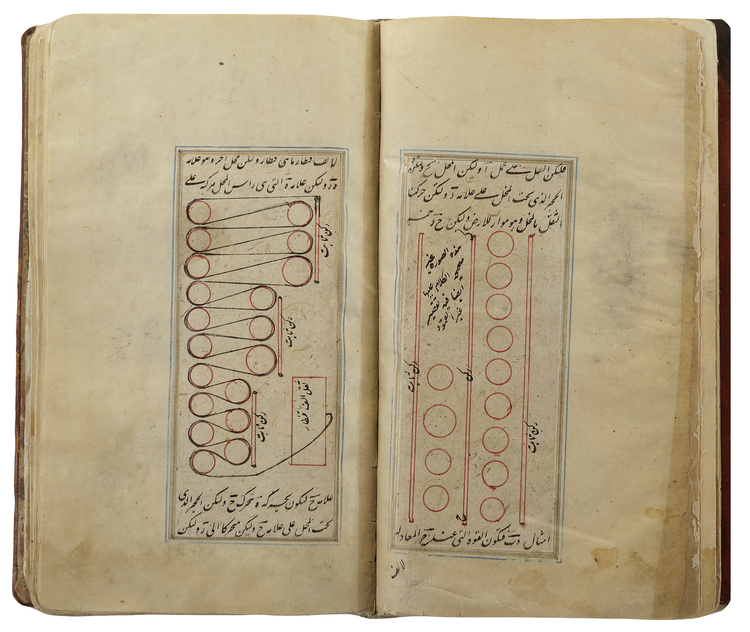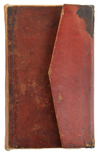MECHANICA OF HERON, IREN IN WEIGHTLIFTING TRICKS, EARLY 18TH CENTURY
Arabic manuscript on paper, 88 leaves with 15 lines to each page, written in black Persian nastaliq script. Three treatises about tricks in lifting heavy objects, with 67 detailed geometric drawings in red ink, all ruled in gold and blue borders. With a later red morocco leather binding. 20 by 12 cm.
Author: Hero of Alexandia or Heron, was a Greek mathematician and engineer who was active in his native city of Alexandria, Roman Egypt. He is often considered the greatest experimenter of antiquity and his work is representative of the Hellenistic scientific tradition. He wrote many like Pneumatica, Automata , Metrica and This book ‘Mechania’ which is preserved only in Arabic, written for architects and containing means to lift heavy objects. Mechania was originally translated by Qusta ibn Luqa (820-912), a Syrian Christian physician who traveled to parts of the Byzantine Empire and brought back Greek texts and translated them into Arabic during the reign of the Abbasid Al-Musta’in. Due to the absence of the Greek origin, this Arabic manuscript is considered one of the most important texts in the science of Mechanics, and has been translated into many languages such as Latin, German and French.
Copies of the manuscript are few and rare, and according to the investigation there are only 39 copies of it in the world, and most of them are incomplete and late in the period until the 13th AH/19th AD century. The most important of these manuscripts is the version of the Azam Mosque in Qom - Iran No. 50251-1 entitled ‘The Book of Iran in Weightlifting Tricks’ for its perfection, clarity and presentation, and it includes 67 mechanical engineering shapes that may date back to the early 7th AH century. Followed by the importance is the copy of Leiden Library 1-57051, the copy in the British Library Addms 23390 and the copy in the Aya Sofia in Turkey 2755-1. This book is identical to the most important copy, in the Azam mosque in Qom, Persia.





